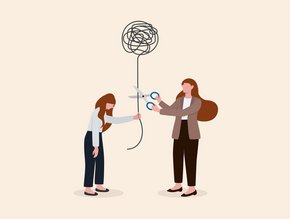Endometriosis: The shame women feel has got to stop

10% of women have endometriosis, a little-discussed condition caused by tissue similar to that of the uterus lining growing elsewhere in the body.
This creates a chronic inflammatory reaction that causes pain during periods, sex, bowel movements and urination, as well as feelings of fatigue, nausea and depression. It’s often misdiagnosed, leading to many years of unnecessary pain and difficulty among women, as well as shame – so let’s tear down the stigma.
900BC: Adjusting the uterus with a ladder
The Ancient Greeks (12th–9th centuries BC) were behind ideas as pivotal to human history as the Olympics and democracy. They were also leaders in medicine.
To ease the pain of endometriosis, a woman was tied to a ladder, then turned upside down. The ladder would then be shaken. This was believed to ‘adjust the uterus back into position’.
1860: Abnormal tissue around the uterus discovered
Born in 1804, Austrian pathologist Karl Freiherr von Rokitansky studied medicine at the University of Prague.
He went on to perform 30,000 autopsies in his career. In female patients, he studied abnormal tissue growth around the uterus, which led Rokitansky to detect endometriosis.
1862: Problematic young females
Neurologist Jean-Martin Charcot (1825-1893) visited the Salpêtrière, a French insane asylum where he came across women suffering from hystero-epilepsy – suspected nowadays as undiagnosed endometriosis. Charcot recorded that these women were treated as “problematic young females”, who had been abandoned “by their exhausted families”. The ward was said to be “the saddest at the Salpêtrière”.
1896: Freud’s manual stimulation devices
Freud diagnosed endometriosis-related symptoms as hysteria. He believed traumatic sexual experiences caused this during childhood and treated patients with hypnosis or vaginal massages. The latter was obviously more popular with women, but as male doctors found the process took so long, manual stimulation devices were used instead.
2017: Doctors told to ‘Listen to women’
The healthcare sector has come a long way since ‘hysteria’, yet according to the UK’s National Institute for Health and Care Excellence (NICE), it takes up to eight years for a woman to be correctly diagnosed with endometriosis. NICE told doctors to ‘listen to women’.






